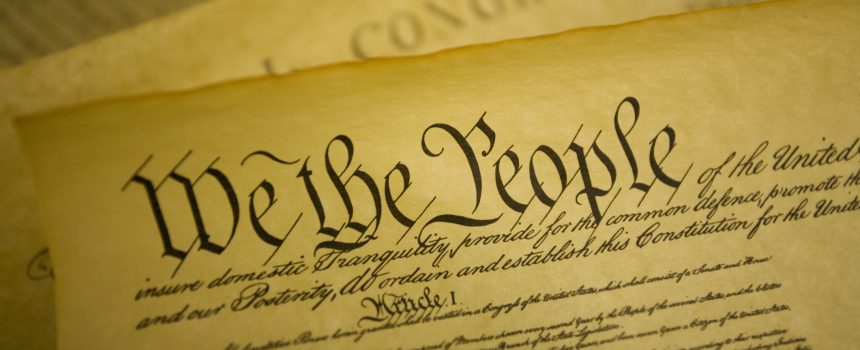This is an excerpt from Nikolaus Kimla’s new ebook Sales and Commerce: Vital Lessons from the American Revolution, released today.
Let’s take a look at how the American War of Independence managed to evolve into the very stable, powerful nation that is still thriving today.
As the War of Independence was progressing–and as the colonies realized they could very well win–the first version of the US Constitution, called the Articles of Confederation, was drafted, and went into effect in 1781. The Articles of Confederation made for a weak federal government, however, and resulted in quite a bit of infighting and controversy between the states. In 1787 the Constitutional Convention was convened with the stated purpose of drafting a new constitution, but with a further purpose of creating a stronger and more stable government. The new constitution came into force in 1789, and both purposes were achieved and resulted in an enormously long-lasting success. Nearly 250 years later, it’s still with us and going strong.
Although George Washington was unanimously elected by the Electoral College as the first US president, the new Constitution varied from a tradition of rule in Europe in that rulers were not given a lifetime rule. Washington served 2 terms of 4 years each as president.
As the new country was starting to grow, there came about 2 political parties: the Federalists, of which George Washington was a principal, and the Democratic-Republican party (also known as the Republican party) led by Thomas Jefferson. The freedom of competition between political parties made for a stronger union, as is expressed in the US Constitution and its Bill of Rights. It also fostered the same sort of healthy competition which later became evident in a free market economy.
Comparison to a Company
What can we learn from the creation of such a constitution, that might be applied to a company?
When a constitution is created for a nation, it is obviously much more complex than it would be for a company. Nonetheless a company has to have a clear strategy. Without a clear mission and a clear vision, and without a clear structure, a company won’t survive. In this way we can compare a company’s vision and mission statement with a nation’s constitution.
Here at Pipeliner, we have certainly created a very clear vision and mission statement, and program our product and run the company by them. These are included in our Pipeliner Manifesto, which lays them out in detail, and provides a precise outline of what we want to accomplish, along with our overall guiding strategy.
Don’t Rush It
Our guiding strategy was not devised overnight, but evolved over years. This was partially because I wasn’t the only one with strong opinions and views of how our company should operate; there were others. But it was also because it actually does take time to do these things right. I would go so far as to say–and I know there are many that would agree with me–that time is the best teacher.
When one tries to rush the creation of something profound and foundational, too many times they later must go back and say, “That’s not true anymore.” Like a child, like anything in nature, great things take time. I don’t think it’s very effective to force a bunch of people into a room and say something like, “In the next 2 hours we have to create a mission statement.” You end up with a statement that people are repeating but not living.
Customers are very aware of this. If they don’t see your vision and mission statement being demonstrated in real-world action, they’ll take notice. People only believe what they experience. When the overall message doesn’t coordinate with a company’s strategy and what they want to accomplish, people will end up saying, “They have a nice mission statement but they don’t live it.”
Free Market Competition
I do a great deal of travel by air, and I am often subject to an airline’s mission statement and vision shown by video prior to takeoff. It makes the airline look wonderful, but it’s the travel experience that remains with me that will tell the story. You can imagine seeing a video like that, or reading a flowing printed statement of an airline’s vision, and then getting bodily dragged off a plane by security. How far apart is that mission statement and reality? “Fly the friendly skies” indeed.
The only reason that kind of occurrence can take place in the US is that there are relatively few airlines operating domestically inside the country–they have somewhat of a monopoly, and passengers often only have the choice of one airline to get to a certain destination at a certain time. One day, though, there will be enough airlines competing with each other that they will have to compete on their merits and their service. In such an environment, United Airlines, with their recent performance, would be history.
In the moment that we have a competitive situation, we have what’s best for the customer, and we have an open market. Today we have a country, the USA, that has been molded and guided by its Constitution. A company that is likewise guided by its mission and vision, and in an economy where competition helps drive business, means that customers always receive what they really desire and deserve: fantastic products and service.
Pipeliner CRM greatly assists a company and a sales force to stay with its mission and vision. Get your free trial of Pipeliner CRM now.





















Comments